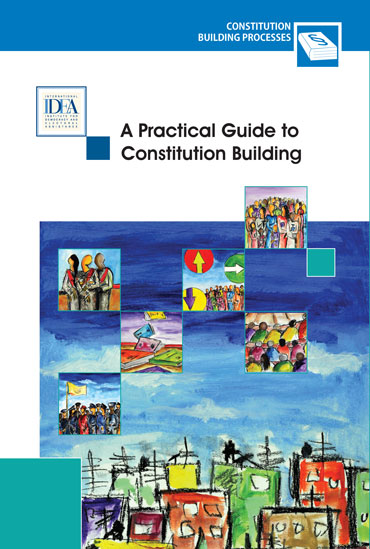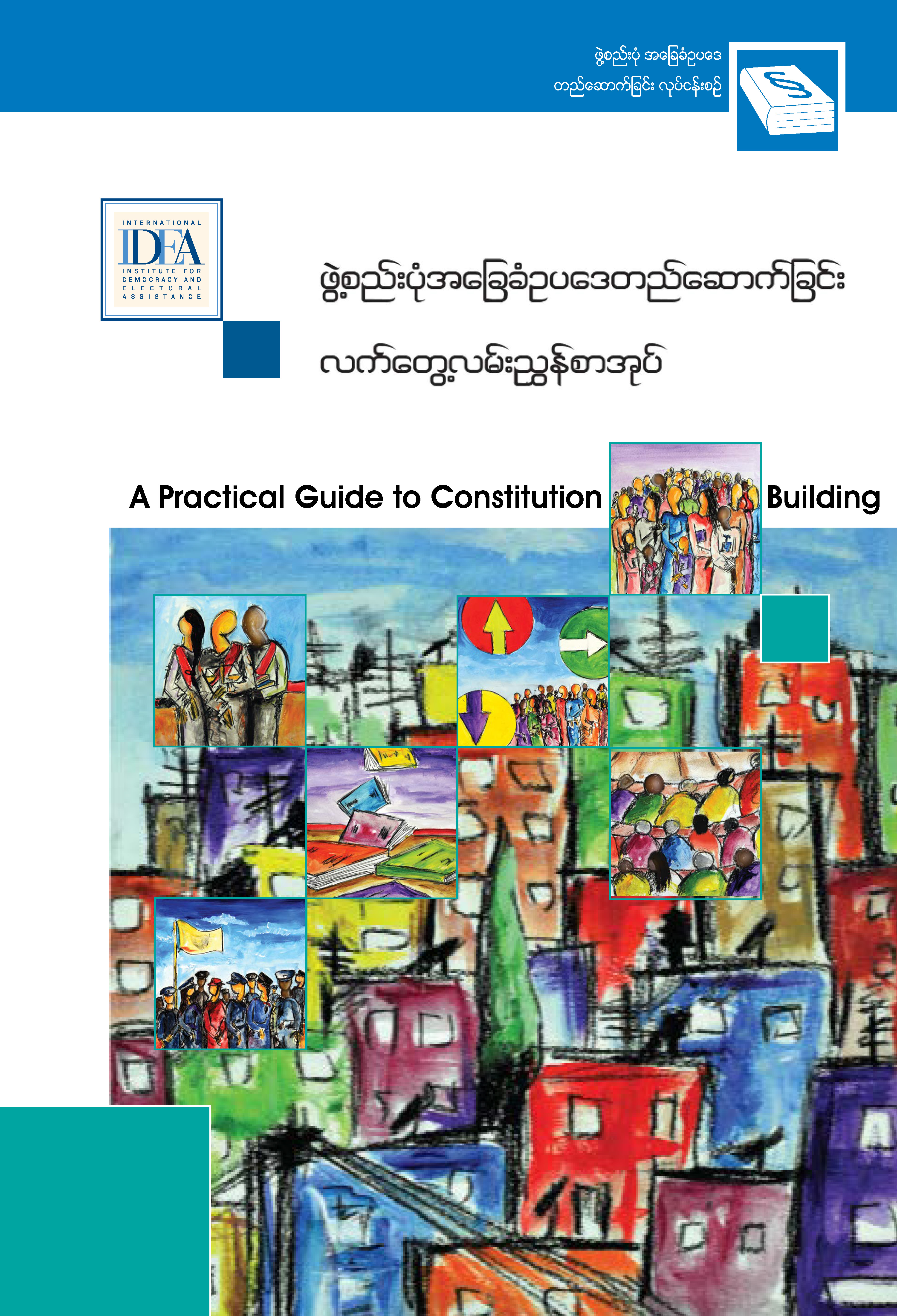A PRACTICAL GUIDE TO CONSTITUTION BUILDING


ဖွဲ့စည်းပုံအခြေခံဥပဒေတွင် ပါဝင်သည့်အကြောင်းအရာများသည် နိုင်ငံတစ်ခုကို စီမံခန့်ခွဲနိုင်မည့် ပုံစံများကို သတ်မှတ်ပြဋ္ဌာန်းပေးခြင်း၊ ရပိုင်ခွင့်များကို အာမခံပေးခြင်း၊ ယင်းဥပဒေများ သက်ရောက်အာဏာတည်ရေးအတွက် နည်းစနစ်များကိုဖော်ပြပေးခြင်းသာမက နိုင်ငံ၏အနာဂါတ်ကိုလည်း ပုံဖော်ပေးသည်။ များသောအားဖြင့် ပဋိပက္ခအလွန်တွင် ထွက်ပေါ်လာသော ဖွဲ့စည်းပုံအခြေခံဥပဒေများသည် သရုပ်လက္ခဏာကို အခြေခံသောအုပ်စုများ၊ ပဋိပက္ခတွင် ပါဝင်ခဲ့သော အုပ်စုဟောင်းများ၊ နိုင်ငံရေးဆိုင်ရာနှင့် စစ်ဖက်ဆိုင်ရာတို့မှ အဓိကသက်ဆိုင်သူများနှင့် နိုင်ငံတကာမှအဓိကကျသော ပါဝင်သက်ရောက်သူများအပါအဝင် အင်အားစုများစွာအကြား ပြိုင်ဆိုင်မှုများ နှင့် စေ့စပ်ညှိနှိုင်းသဘောတူညီမှုများ၏ ရလဒ်များ ဖြစ်နေလေ့ရှိသည်။ ဤလက်တွေ့လမ်းညွှန်စာအုပ်သည် ဖွဲ့စည်းပုံအခြေခံဥပဒေနှင့် အခြေခံဥပဒေတည်ဆောက်ခြင်းကို နားလည်စေရန် မရှိမဖြစ် လိုအပ်သော အခြေခံအချက်များကို ဖော်ပြပေးပါသည်။ ထို့ပြင် ဤလမ်းညွှန်စာအုပ်သည် အခြေခံဥပဒေများကို မည်သို့ရေးဆွဲခဲ့ကြသည်၊ ဒီမိုကရေစီတန်ဖိုးများကို မည်ကဲ့သို့ အစပြုကာ အခြေတည်အောင် ထည့်သွင်းခဲ့ကြသည်ဟူသော ကျယ်ပြန့်သည့် နမူနာအမျိုးမျိုးကို ထည့်သွင်းဖော်ပြထားပါသည်။ ဤဖွဲ့စည်းပုံအခြေခံဥပဒေတည်ဆောက်ခြင်း လက်တွေ့လမ်းညွှန်စာအုပ်တွင် အခန်း ၇ ခန်း ပါဝင်သည်။ ယင်းတွင် မိတ်ဆက်နိဒါန်း (အခန်း ၁)၊ အခြေခံမူများနှင့် အပြန်အလှန်ချိတ်ဆက်နေသော အကြောင်းအရာများ (အခန်း၂)၊ လူ့အခွင့်အရေးဆိုင်ရာ ဓလေ့ထုံးတမ်းများ တည်ဆောက်ခြင်း (အခန်း ၃)၊ ဖွဲ့စည်းပုံအခြေခံဥပဒေ တည်ဆောက်ခြင်းတွင် အုပ်ချုပ်ရေး၊ ဥပဒေပြုရေး နှင့် တရားစီရင်ရေးတို့၏ ဒီဇိုင်းပုံစံ (အခန်း ၄၊ ၅ နှင့် ၆) နှင့် ဖွဲ့စည်းပုံအခြေခံဥပဒေတည်ဆောက်ခြင်းနှင့်စပ်လျဥ်း၍ ဗဟိုချုပ်ကိုင်မှုလျှော့ချထားသော အစိုးရပုံစံများ (အခန်း ၇) တို့ပါဝင်သည်။ ဤအခန်းတစ်ခုချင်းစီကို အောက်ပါ မာတိကာဇယားတွင် ဒေါင်းလုတ်ရယူ ဖတ်ရှုနိုင်ပါသည်။
The content of a constitution provides a blueprint for the operation of a state, guarantees rights and outlines mechanisms for their enforcement, as well as shapes the future of a nation. Constitutions that emerge after conflict are often a result of negotiated settlements and competition between many forces including identity-based groups, former parties to conflict, political and military actors and international actors. This Handbook provides an essential foundation for understanding constitutions and constitution building. Full of world examples of groundbreaking agreements and innovative provisions adopted during processes of constitutional change, the Guide offers a wide range of examples of how constitutions develop and how their development can establish and entrench democratic values. Beyond comparative examples, the Handbook contains in-depth analysis of key components of constitutions and the forces of change that shape them. It analyses the adoption of the substantive elements of a new constitution by looking at forces for the aggregation or dissemination of governmental power, and forces for greater legalization or politicization of governmental power, and examining how these forces influence the content of the constitution. This handbook is designed as a box which includes seven separate chapters. Separate chapters are also available in print.